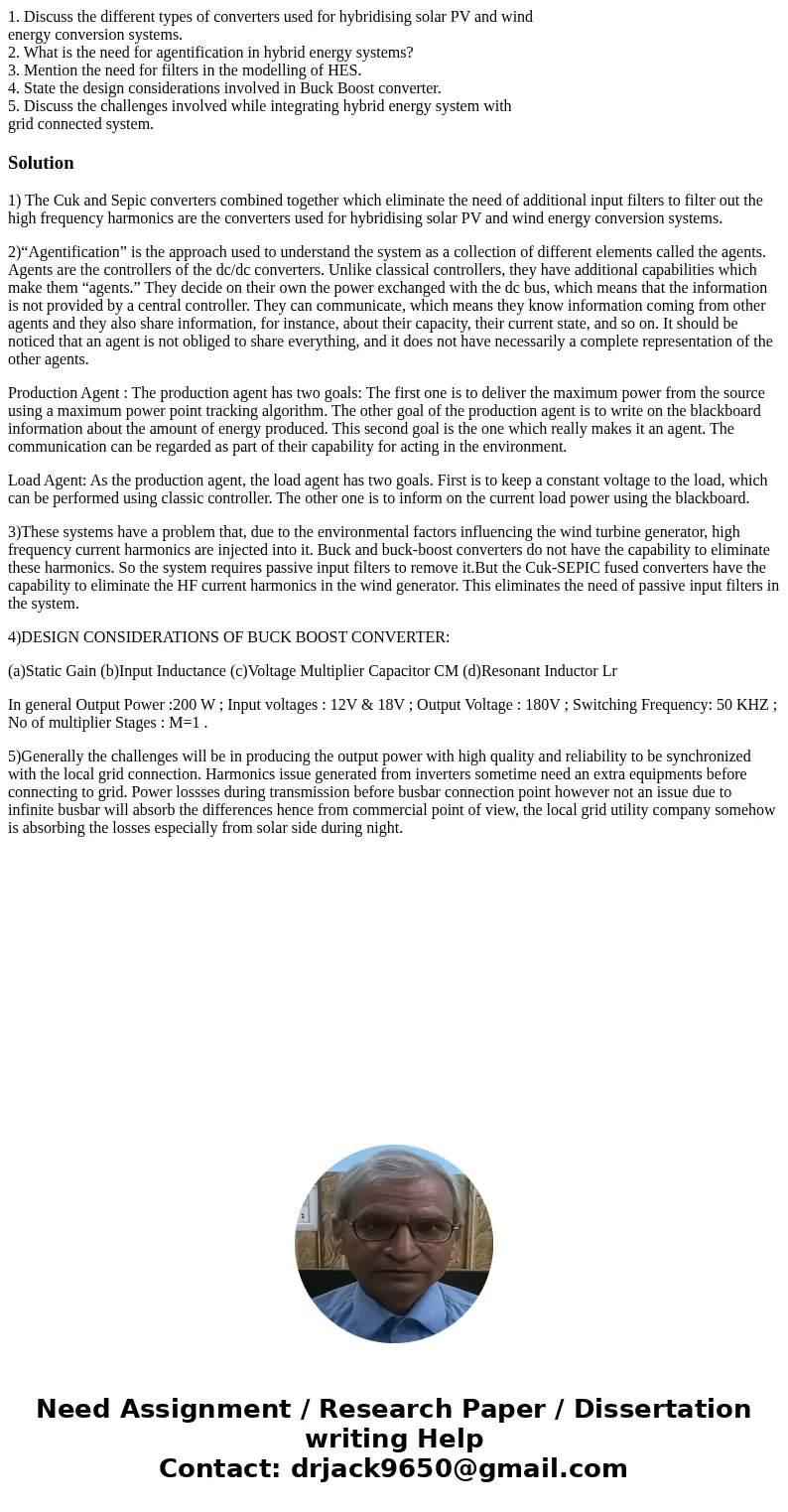1 Discuss the different types of converters used for hybridi
1. Discuss the different types of converters used for hybridising solar PV and wind
energy conversion systems.
2. What is the need for agentification in hybrid energy systems?
3. Mention the need for filters in the modelling of HES.
4. State the design considerations involved in Buck Boost converter.
5. Discuss the challenges involved while integrating hybrid energy system with
grid connected system.
Solution
1) The Cuk and Sepic converters combined together which eliminate the need of additional input filters to filter out the high frequency harmonics are the converters used for hybridising solar PV and wind energy conversion systems.
2)“Agentification” is the approach used to understand the system as a collection of different elements called the agents. Agents are the controllers of the dc/dc converters. Unlike classical controllers, they have additional capabilities which make them “agents.” They decide on their own the power exchanged with the dc bus, which means that the information is not provided by a central controller. They can communicate, which means they know information coming from other agents and they also share information, for instance, about their capacity, their current state, and so on. It should be noticed that an agent is not obliged to share everything, and it does not have necessarily a complete representation of the other agents.
Production Agent : The production agent has two goals: The first one is to deliver the maximum power from the source using a maximum power point tracking algorithm. The other goal of the production agent is to write on the blackboard information about the amount of energy produced. This second goal is the one which really makes it an agent. The communication can be regarded as part of their capability for acting in the environment.
Load Agent: As the production agent, the load agent has two goals. First is to keep a constant voltage to the load, which can be performed using classic controller. The other one is to inform on the current load power using the blackboard.
3)These systems have a problem that, due to the environmental factors influencing the wind turbine generator, high frequency current harmonics are injected into it. Buck and buck-boost converters do not have the capability to eliminate these harmonics. So the system requires passive input filters to remove it.But the Cuk-SEPIC fused converters have the capability to eliminate the HF current harmonics in the wind generator. This eliminates the need of passive input filters in the system.
4)DESIGN CONSIDERATIONS OF BUCK BOOST CONVERTER:
(a)Static Gain (b)Input Inductance (c)Voltage Multiplier Capacitor CM (d)Resonant Inductor Lr
In general Output Power :200 W ; Input voltages : 12V & 18V ; Output Voltage : 180V ; Switching Frequency: 50 KHZ ; No of multiplier Stages : M=1 .
5)Generally the challenges will be in producing the output power with high quality and reliability to be synchronized with the local grid connection. Harmonics issue generated from inverters sometime need an extra equipments before connecting to grid. Power lossses during transmission before busbar connection point however not an issue due to infinite busbar will absorb the differences hence from commercial point of view, the local grid utility company somehow is absorbing the losses especially from solar side during night.

 Homework Sourse
Homework Sourse